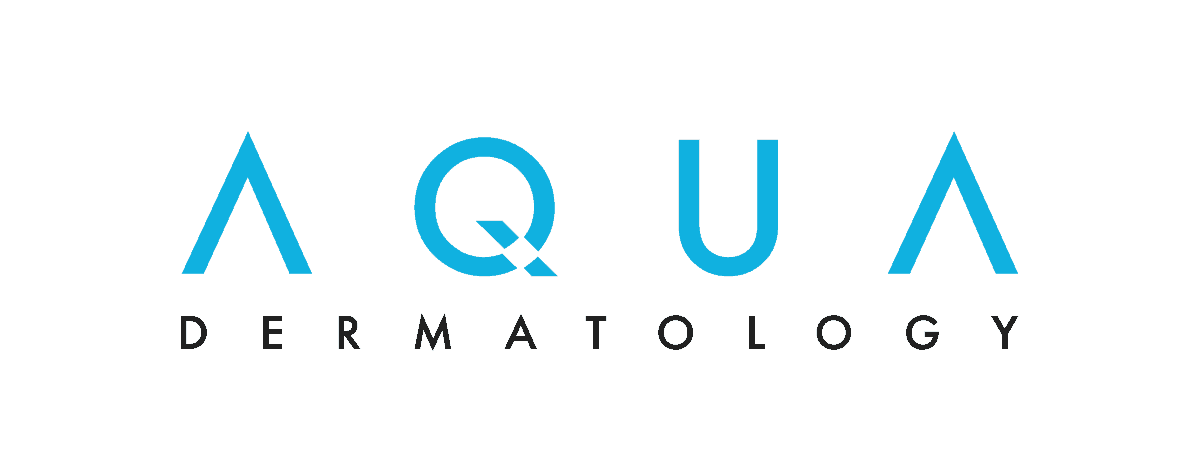Moles
Most people have between 10 and 40 moles, or nevi, on their bodies. Those with darker skin tone tend to also have darker mole color, while light-skinned adults may have more moles on their bodies.
Symptoms
Moles form when pigment cells in the skin, called melanocytes, grow in clusters. Moles may appear anywhere on your body, including on your palms, the soles of your feet or under your nails. Moles on your body may not all look alike or have the same size, shape or color. An individual mole (nevus) usually is one color — pink, tan, brown or similar in color to your own skin tone, and can be flat (junctional nevus) or raised (compound nevus). It may have hair. Typically, moles are round or oval-shaped and no larger than a pencil eraser (¼”, or 4mm).
While you may have been born with moles, they usually appear later in childhood, and new moles may develop until about the age of 40. Normally, moles should remain relatively unchanged from month to month, although they may darken during pregnancy or after sun exposure. After age 40, moles often start to fade.
What Causes Moles?
Most people have common (acquired) moles as described in the section above. However, some types of nevi can increase a person’s risk for getting an aggressive type of skin cancer called melanoma. You should not be overly worried, but you should be mindful that melanoma can grow in or near a mole.
Be aware of any change to a mole, or of a new mole on your skin. By conducting a monthly skin self-exam you can help spot melanoma early. Use a body mole map to keep track of moles, their location, and appearance. Most importantly, make an appointment right away to see a Riverchase dermatologist if you see any of the following changes in a common mole:
- Changing color, shape, texture or height
- Itchiness
- Uneven growth or shrinking
- Dry, scaly feel
- Hardening or lumpiness
Being exposed to sunlight is believed to stimulate the formation of new moles on your skin, and it’s widely accepted that sunlight causes skin cancer. An easy way to reduce your risk is to skip getting a tan, whether from the sun, a tanning bed or sun lamp, and always remember to wear sunscreen.
Types of Moles
Atypical Mole (dysplastic nevus)
This type of mole can look like melanoma, but it is not. Atypical moles are often larger than the end of a pencil eraser, have an odd shape (not round or oval) and show more than one color. They can appear on the scalp, head, neck or trunk of the body, but rarely on the face.
You have a higher risk of an atypical mole turning into melanoma if you’ve already had a melanoma, have four or more atypical moles on your body, or if a member of your immediate family (parent, brother, sister or child) has had melanoma.
Congenital Mole
About one person in a hundred is born with a mole. A mole you are born with is called a congenital mole. These moles vary in size from small to giant. Having a giant congenital mole increases your risk of developing melanoma, and your dermatologist may recommend its removal.
Spitz Nevus
A pink, raised and dome-shaped mole, sometimes with red, black or brown coloring within it, is called a Spitz nevus. This mole can resemble melanoma and be difficult to distinguish from skin cancer by looking at it. The mole may bleed and can have an opening that oozes. Most Spitz nevi appear by age 20 but can develop in adults as well.
Acquired Moles
An acquired mole is a common nevus that appears on the skin after a person is born. They are basically harmless and are considered normal. But, if you have 50 or more of these common moles, you are at a higher risk for getting melanoma and should have your skin checked regularly by a dermatologist.
Treatment Options
Most moles are benign (non-cancerous) and don’t require medical treatment. A dermatologist will remove a nevus that is irritating you because it rubs against clothing, catches on jewelry or for some other reason. It also may be removed because you find it unattractive or are embarrassed by it, or because it could be the type of “bad mole” that can lead to skin cancer.
A Riverchase dermatologist can safely and easily remove a troubling mole during an office visit. They may use either a surgical shave in which a surgical blade is used to remove the mole or through surgical excision, in which the entire mole is cut out and the surrounding skin stitched closed. If a dermatologist suspects cancer, they will send a sample of the mole tissue that was removed to a lab for examination (a biopsy).
After a mole is removed, the skin heals. If the mole grows back, immediately make another appointment to see your dermatologist. This is a sign of melanoma. Skin cancer is curable if detected early, so don’t delay.





